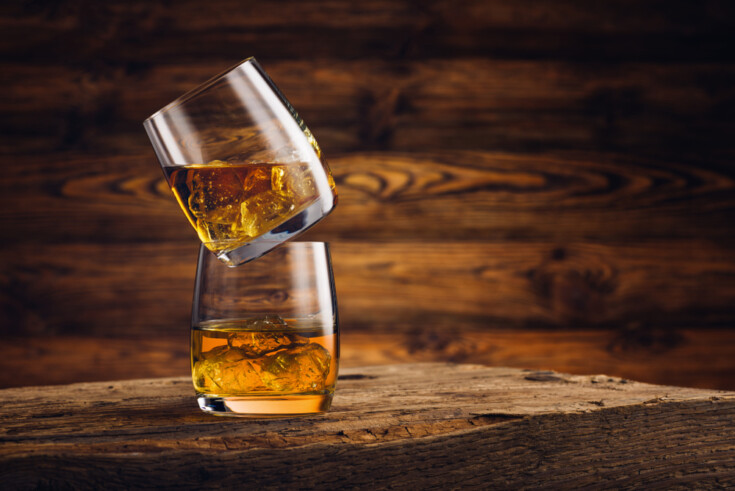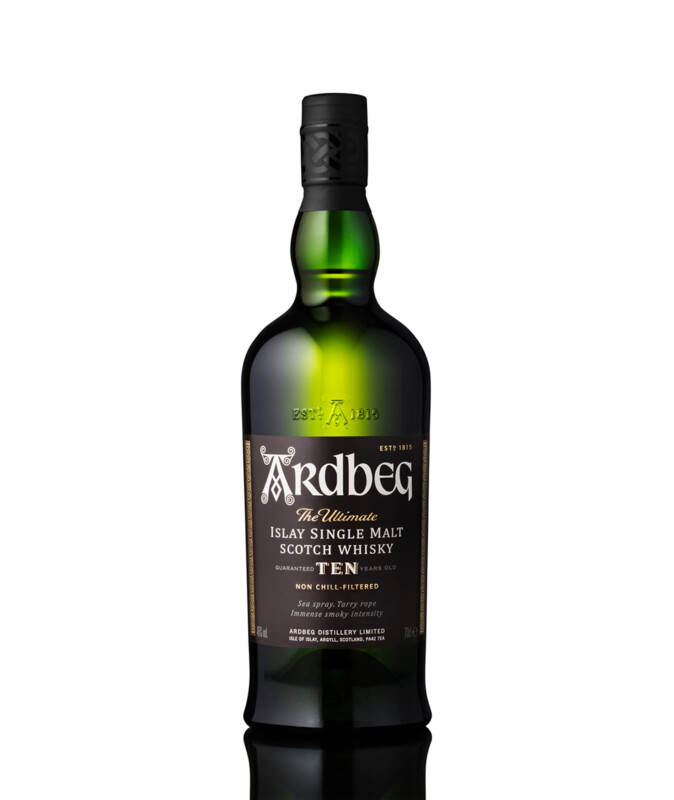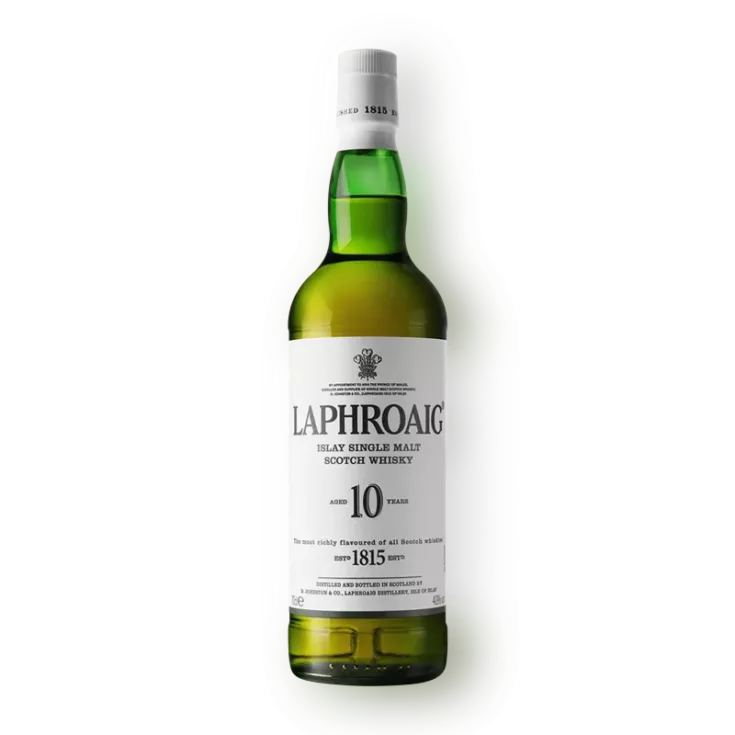
Are you a fan of peated scotch whisky and wondering which one to choose between Ardbeg 10 and Laphroaig 10? Both whiskies are from Islay, Scotland, and are known for their smoky, peaty flavors. However, they have some differences that set them apart from each other.
Ardbeg 10 has a BV of 46% and can be sipped alone, while Laphroaig 10 has a higher ABV of 56%, although other versions have 40%. Ardbeg 10 has a more herbal and grassy taste with rosemary and mint, while Laphroaig 10 has smoky and maritime flavor characteristics. These differences may make one whisky more appealing to you than the other depending on your personal taste preferences.
Table of Contents
History of Ardbeg 10 vs Laphroaig 10
If you’re a fan of peated whisky, chances are you’ve tried or at least heard of Ardbeg 10 and Laphroaig 10. These two single malt Scotch whiskies are often compared, but they have distinct histories that have shaped their unique flavors.
Ardbeg 10’s History
 photo credit: www.ardbeg.com
photo credit: www.ardbeg.com
Ardbeg Distillery was founded in 1815 on the southern coast of the Isle of Islay, Scotland. It was one of many distilleries on the island, but it quickly gained a reputation for producing high-quality whisky. The distillery changed hands several times over the years, but it continued to operate until 1981 when it was closed due to financial difficulties.
Fortunately, the distillery was purchased by Glenmorangie in 1997, and after extensive renovations, it was reopened in 1998. Today, Ardbeg is known for its heavily peated whisky, which is made using malted barley that has been dried over peat fires. The result is a rich, smoky flavor that has won the distillery numerous awards.
Laphroaig 10’s History
 photo credit: www.laphroaig.com
photo credit: www.laphroaig.com
Laphroaig Distillery was founded in 1815, just a few miles from Ardbeg on the southern coast of Islay. Like Ardbeg, Laphroaig quickly gained a reputation for producing high-quality whisky, and it became a favorite of the British royal family.
During Prohibition in the United States, Laphroaig was one of the few distilleries that was allowed to continue producing whisky for medicinal purposes. This helped to keep the distillery afloat during a difficult period.
Today, Laphroaig is known for its distinctively medicinal flavor, which is the result of the distillery’s use of locally sourced peat in the drying process. The whisky is also aged in barrels that have previously held bourbon, which gives it a sweet, vanilla flavor.
Production Process
When it comes to producing Ardbeg 10 and Laphroaig 10, both distilleries follow a similar process. However, there are some differences that make each whiskey unique.
Ardbeg 10’s Production Process
Ardbeg 10 is made from malted barley that is dried using peat smoke. The peat used in the process comes from the nearby Islay peat bogs, which gives the whiskey its signature smoky flavor. The malted barley is then ground into grist and mixed with hot water to create a sugary liquid called wort.
The wort is then fermented with yeast in large wooden washbacks for up to 5 days. This process converts the sugar in the wort into alcohol, creating a beer-like liquid called wash. The wash is then distilled twice in copper pot stills to create a clear, high-alcohol spirit.
The spirit is then matured in oak casks for at least 10 years before being bottled. During this time, the whiskey takes on flavors and aromas from the oak casks, as well as the peat smoke used in the drying process.
Laphroaig 10’s Production Process
Like Ardbeg 10, Laphroaig 10 is made from malted barley that is dried using peat smoke. However, Laphroaig uses a higher peat level of 40 ppm, which gives the whiskey an even smokier flavor.
The malted barley is then ground into grist and mixed with hot water to create wort. The wort is then fermented with yeast in stainless steel washbacks for up to 4 days. This process creates a beer-like liquid called wash, which is then distilled twice in copper pot stills to create a clear, high-alcohol spirit.
The spirit is then matured in oak casks for at least 10 years before being bottled. During this time, the whiskey takes on flavors and aromas from the oak casks, as well as the peat smoke used in the drying process.
Taste Comparison
When it comes to taste, Ardbeg 10 and Laphroaig 10 have some similarities and differences. Both are known for their smoky and peaty flavors, but there are some nuances that set them apart.
Ardbeg 10 has a smoother taste with notes of vanilla, citrus, and a hint of mint and rosemary. It has a lower alcohol content (46% ABV) and can be sipped alone or with a drop of water. This whiskey is not chill-filtered, which means it retains more of its natural flavors and aromas.
On the other hand, Laphroaig 10 has a higher alcohol content (58.6% ABV) and benefits from a drop of water to bring out its flavors. It has a more medicinal taste with notes of iodine and bandaid, which some people find off-putting. However, it also has a sweet and smoky taste with hints of caramel, oak, and chocolate.
Price Comparison
When it comes to choosing between Ardbeg 10 and Laphroaig 10, price is certainly a factor to consider. Both of these whiskies are premium single malts, and as such, they come with a higher price tag than some other whiskies on the market. However, there are some differences in pricing between the two.
At the time of writing, the average price of a bottle of Ardbeg 10 is around $55. This is a relatively high price, but it is worth noting that Ardbeg is a highly respected brand with a loyal following. On the other hand, a bottle of Laphroaig 10 typically costs around $45. This is slightly cheaper than Ardbeg, but still a significant investment.
When it comes to value for money, both Ardbeg and Laphroaig are excellent choices. However, if you are on a tight budget, Laphroaig may be the better option. It is still a high-quality whisky, but it comes with a slightly lower price tag.
It is also worth noting that prices can vary depending on where you live and where you buy your whisky from. Be sure to shop around to find the best deal in your area. Some stores may offer discounts or promotions on certain whiskies from time to time, so it is always worth keeping an eye out for these.
Conclusion
In the end, deciding between Ardbeg 10 and Laphroaig 10 comes down to personal preference. Both are excellent Islay single malt whiskies with distinct flavors and aromas. Here are some key takeaways to help you make your decision:
- Ardbeg 10 is a bit more grassy and herbal with notes of rosemary and mint. It has a balanced smokiness that is not too overpowering.
- Laphroaig 10 is strongly medicinal with flavors. It has a higher ABV and benefits from a splash of water to open up its flavors.
- Ardbeg 10 has a BV of 46% and can be sipped alone, whereas Laphroaig 10 has a higher ABV of 58.6% and may need water to smooth out the alcohol.
- Ardbeg 10 has a richer, creamier texture on the palate, while Laphroaig 10 has a lighter mouthfeel with a dry finish.
Ultimately, it’s up to you to decide which one you prefer. If you’re new to Islay single malt whiskies, we recommend trying both to see which one suits your palate. And if you’re already a fan of one, don’t be afraid to branch out and try the other. Who knows, you might discover a new favorite!



